10 best tracking breeds with the most powerful noses
The best tracking dogs have an unbeatable sense of smell that makes them invaluable members of any hunting or search and rescue party
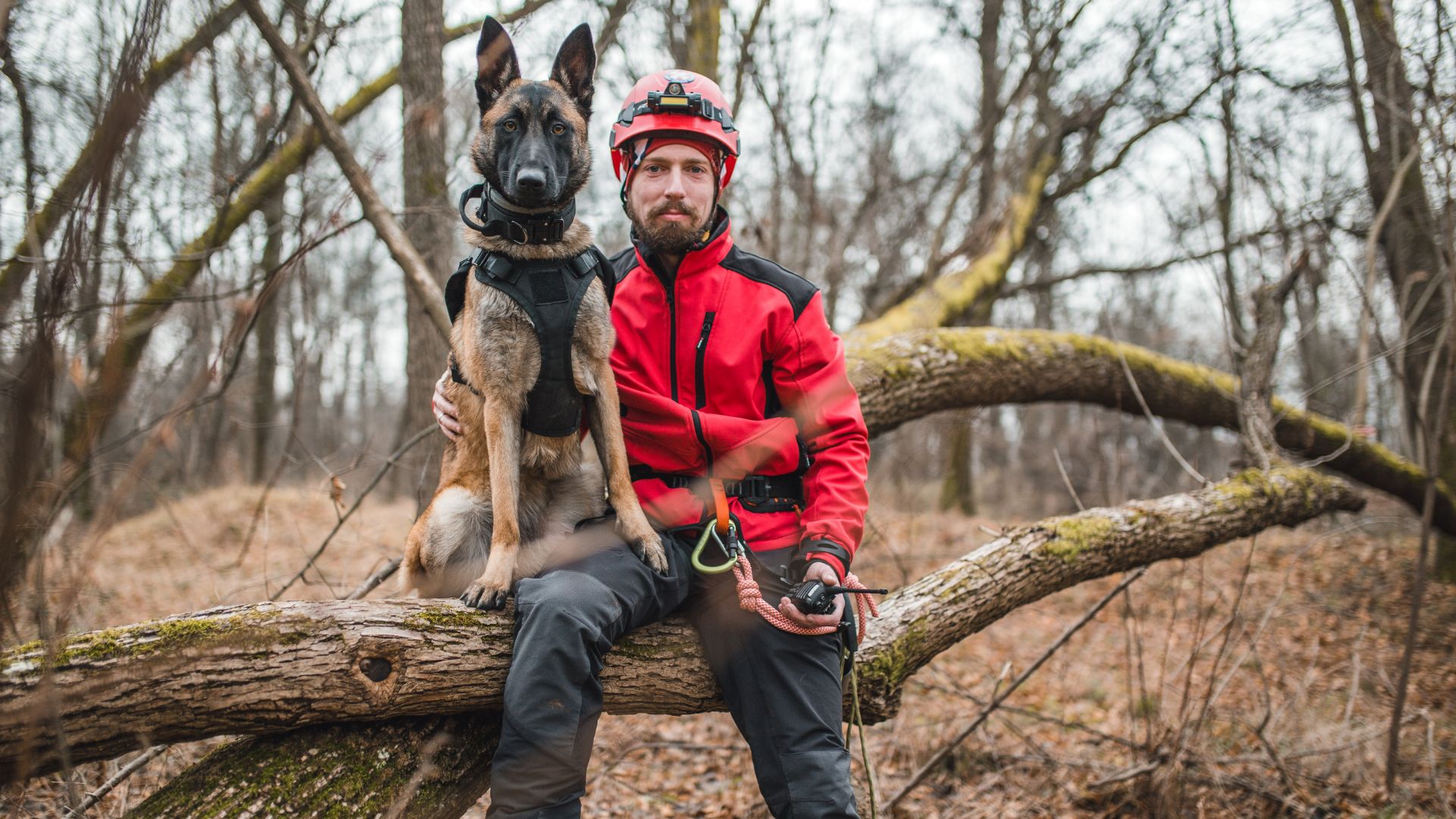
Looking to welcome one of the best tracking dogs into your family? Whether you’re after a canine companion to join you on hunting expeditions (there’s a lot of crossover with the best hunting dogs) or you’re just looking for an intelligent loyal comrade, we’ve got you covered.
Selectively bred for their amazing sense of smell, the best tracking dogs have been used for years to track scents and flush out game on hunting trips as well as taking on various important roles within society. They make excellent search and rescue dogs and support various police and military operations, too, such as sniffing out explosives and illegal goods. Some dogs even have noses powerful enough to detect disease.
As well as being chief sniffers, these dogs often have impressive strength and stamina levels, and excellent skill in agility and intelligence. With a mixture of praise and the best dog treats, you’ll find they respond well to training and commands, making some of them wonderful family pets.
While all dogs have the potential to be great companions when given plenty of love and affection, not all breeds excel at tracking. From picking up the trail of a fugitive on the run to retrieving game in the forest, here’s our pick of the best tracking dogs – and some advice from our vet Dr Rebecca MacMillan...
10 of the best tracking dogs
1. Bloodhound
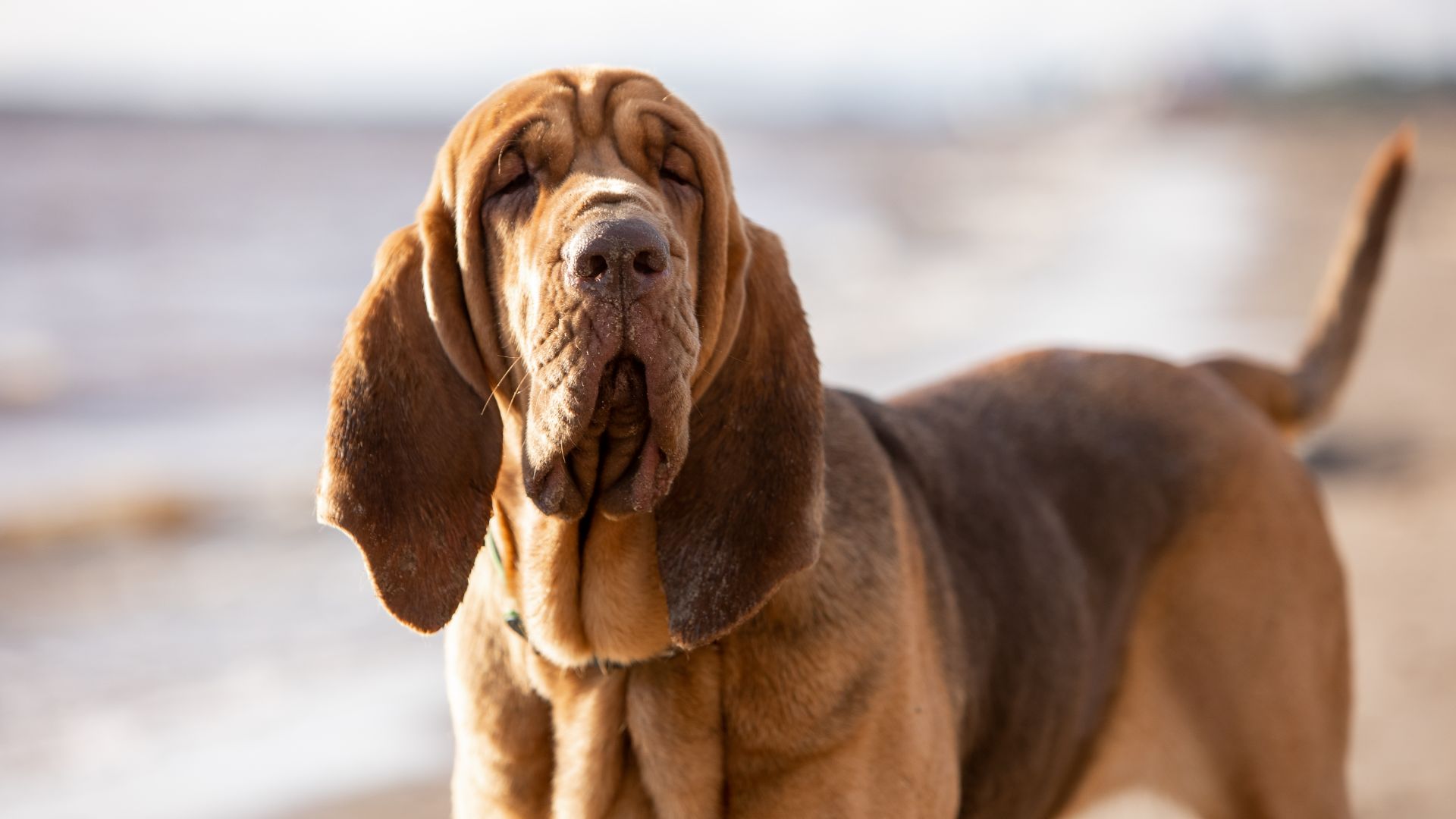
He may be docile and lovey-dovey when he’s at home with his family, but don’t let that fool you – the bloodhound is relentless and stubborn when he’s sent on a tracking mission.
There’s not a dog on earth that can match the bloodhound when it comes to finding things and they were originally bred to hunt deer and wild boar before later learning to track people. Research published in the Journal of Forensic Sciences revealed that veteran bloodhounds are able to trail and correctly identify the scent of individual humans which explains why they’re sometimes seen with police being used as a tool for law enforcement personnel.
Not only do they have extremely sensitive noses (up to 3,000 times better than a human!) but they have high levels of motivation which means they won’t quit a scent until they’ve found what they’re looking for. They do well across all kinds of terrain, including wild and rocky areas.
They’re often used to track fugitives and are commonly used in search and rescue, and while they’re aggressive in their pursuit to find someone, when well trained, they’re not aggressive once they locate a person.
In the UK, they’re used for “hunting the clean boot” – the bloodhounds track a runner on a predetermined route, while riders follow on horseback.
2. Beagle
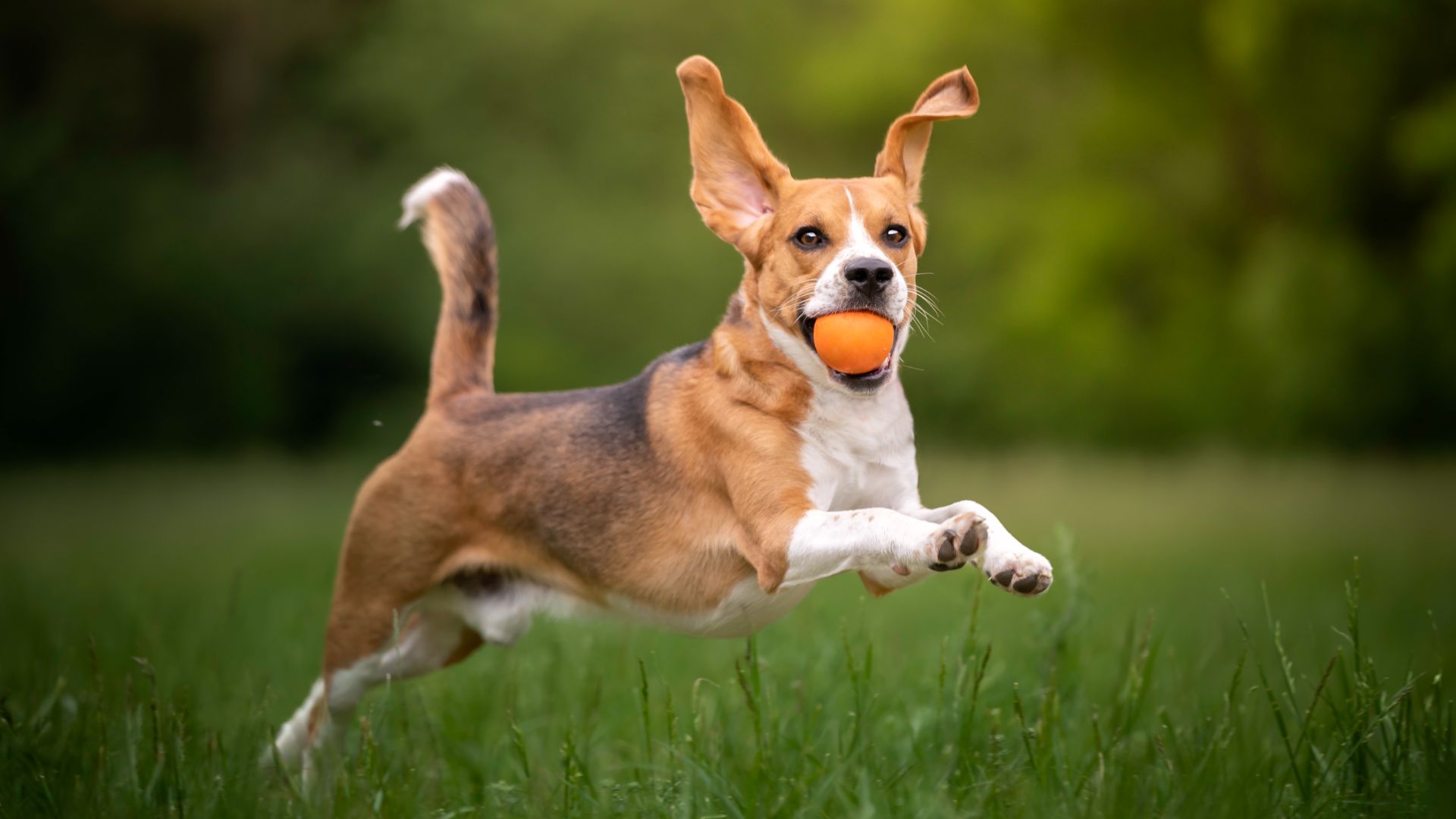
One of the most gentle and happy-go-lucky dogs on the planet, the intelligent, determined, and warm-hearted Beagle makes for an excellent hunting dog and companion.
Being a hound breed, these dogs have an incredibly keen sense of smell and because following scents is so deeply ingrained in them, they’re used all over the world to track animals.
Training your beagle to track is a smart move because these energetic dogs need constant physical and mental stimulation, so giving them a challenge when you’re out together can help tire them out.
The only drawback is that their friendly nature can make them hard to train as adults because their social natures can lead them to become easily distracted. You’ll want to get in early with this breed and train them as a puppy if you want a manageable tracking dog. It’s also good to know that they are one of the most vocal dog breeds.
3. German Shepherd
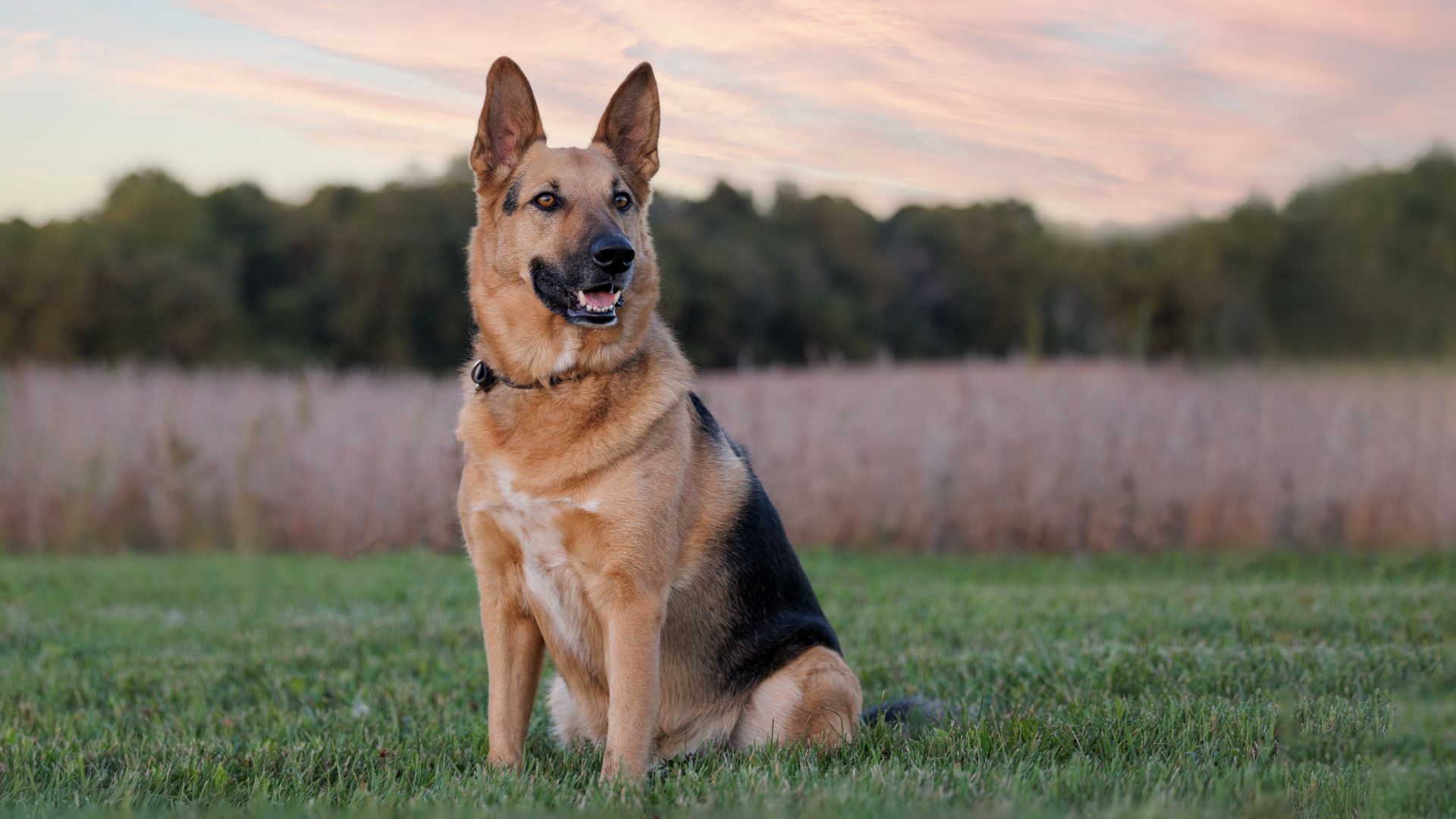
The German Shepherd is full of the “three C’s” any good tracking dog needs to have – curiosity, courage, and confidence – and it’s those traits, coupled with its high level of loyalty and alertness that make them excellent service dogs.
Training a German Shepherd to track has its challenges as they need the right incentives to keep them on task and you’ll also need to ensure you train them in such a way that makes it very clear you’re the leader of the pack. There are also several common German Shepherd health issues you should know about, such as hip dysplasia and epilepsy.
The good news is that a German Shepherd that is trained as a puppy makes for a very keen student and their sponge-like brains mean they pick up commands quickly.
German Shepherd’s have an exceptionally keen sense of smell and when mixed with their agile and muscular build it’s easy to see how they’ve earned their well-deserved reputation as the best all-purpose dog in the world.
4. Basset Hound
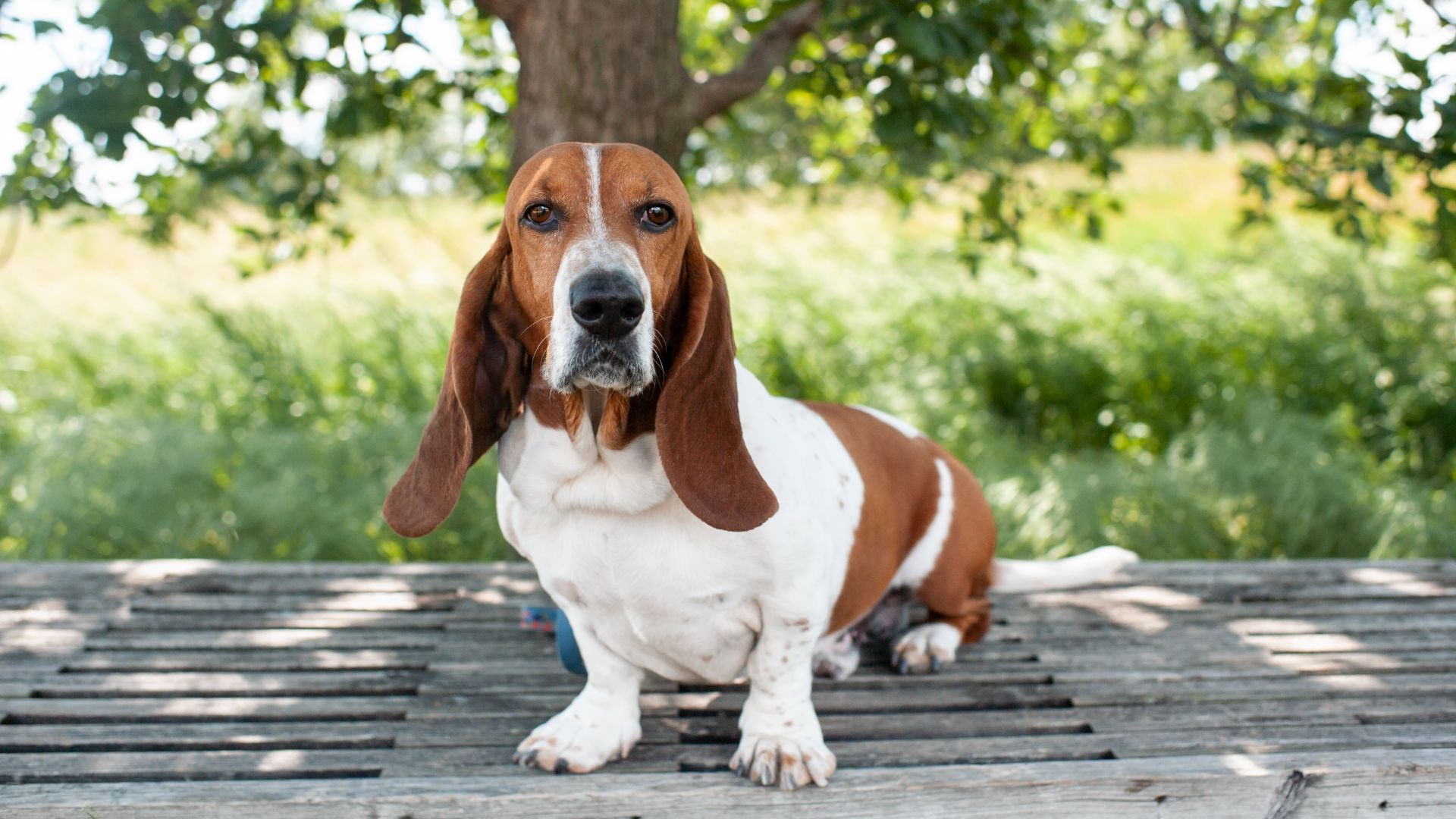
Short and stocky, the ever-endearing Basset Hound is affectionate, tenacious, devoted, and gentle, which has forever made them a favorite amongst dog lovers.
They have heavy bones and powerful little legs that are matched with a scenting ability that’s almost unrivaled and the strength and stamina of a much bigger breed. Bassets were bred for hunting by scent but quickly evolved in the US to become a well-known family pet in many households. They socialize well with dogs and other pets as their ancestors started out hunting in packs.
The Basset Hound can follow a scent uninterrupted for miles, but training them isn’t always the easiest of tasks. That’s because unlike some other breeds, Basset Hounds were bred to be independent hunters and that can make them more stubborn than dogs that were bred to work closely with people.
It’s not impossible though, after all, this dog loves to track scents and it’s a part of their DNA, you’ll just need to invest a little bit more time and energy to make sure they follow your commands and don’t just trot off and do their own thing.
5. English Springer Spaniel
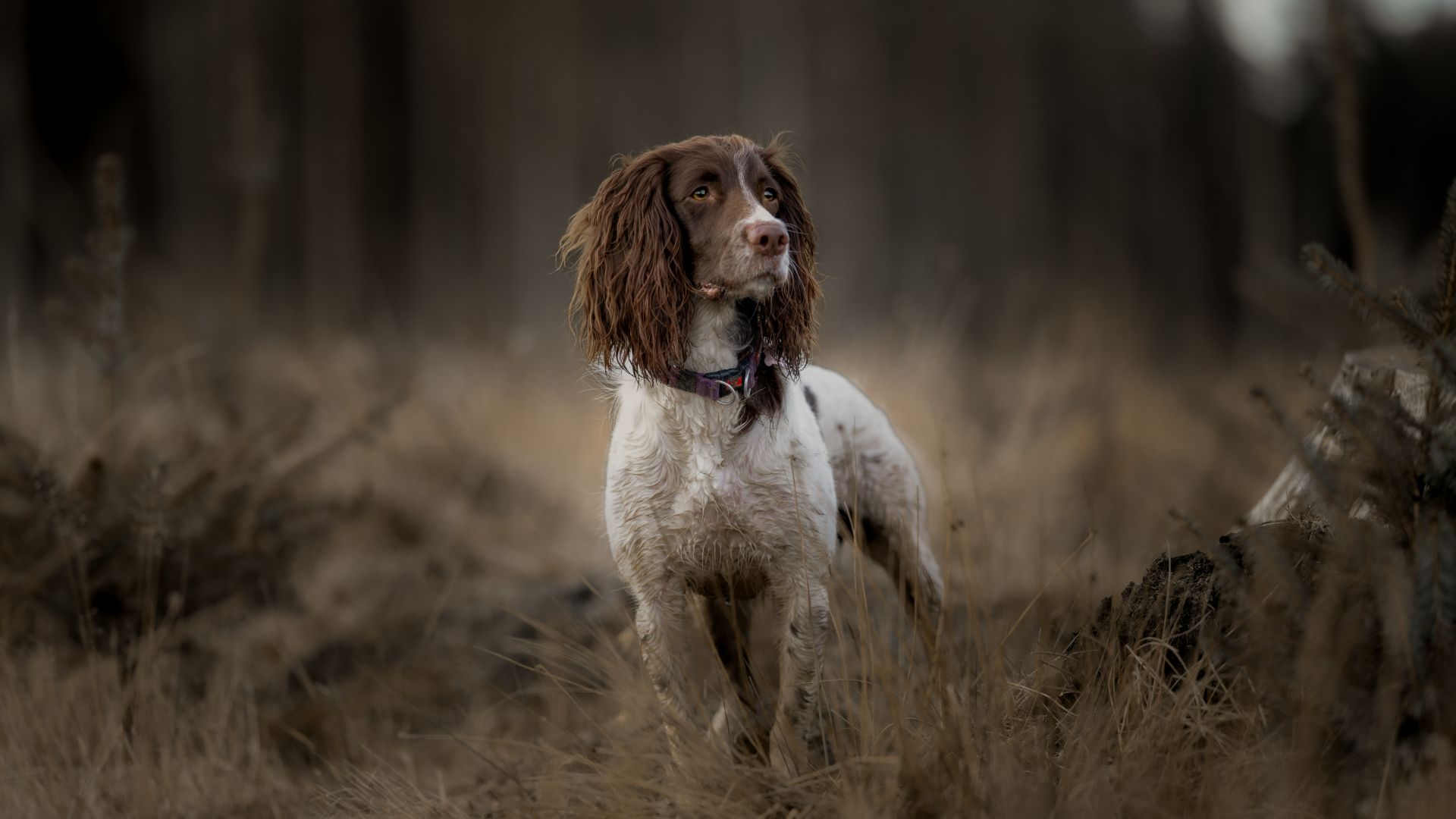
With a sweet face that could melt butter and the kind of stamina that would give an Olympic athlete a run for their money, the English Springer Spaniel is a breed of gun dog popular amongst hunters.
This breed was historically used to “flush” or “spring” game, meaning they used to chase birds into flight so that hunters could then shoot them – hence the name “Springer Spaniel”.
Bred to work closely with humans, they’re extremely eager-to-please and highly obedient which makes them a joy to both train and work with. They excel at finding birds and game, both before and after they’ve been shot, and will even retrieve them, making a hunter’s life that much easier.
6. Belgian Malinois
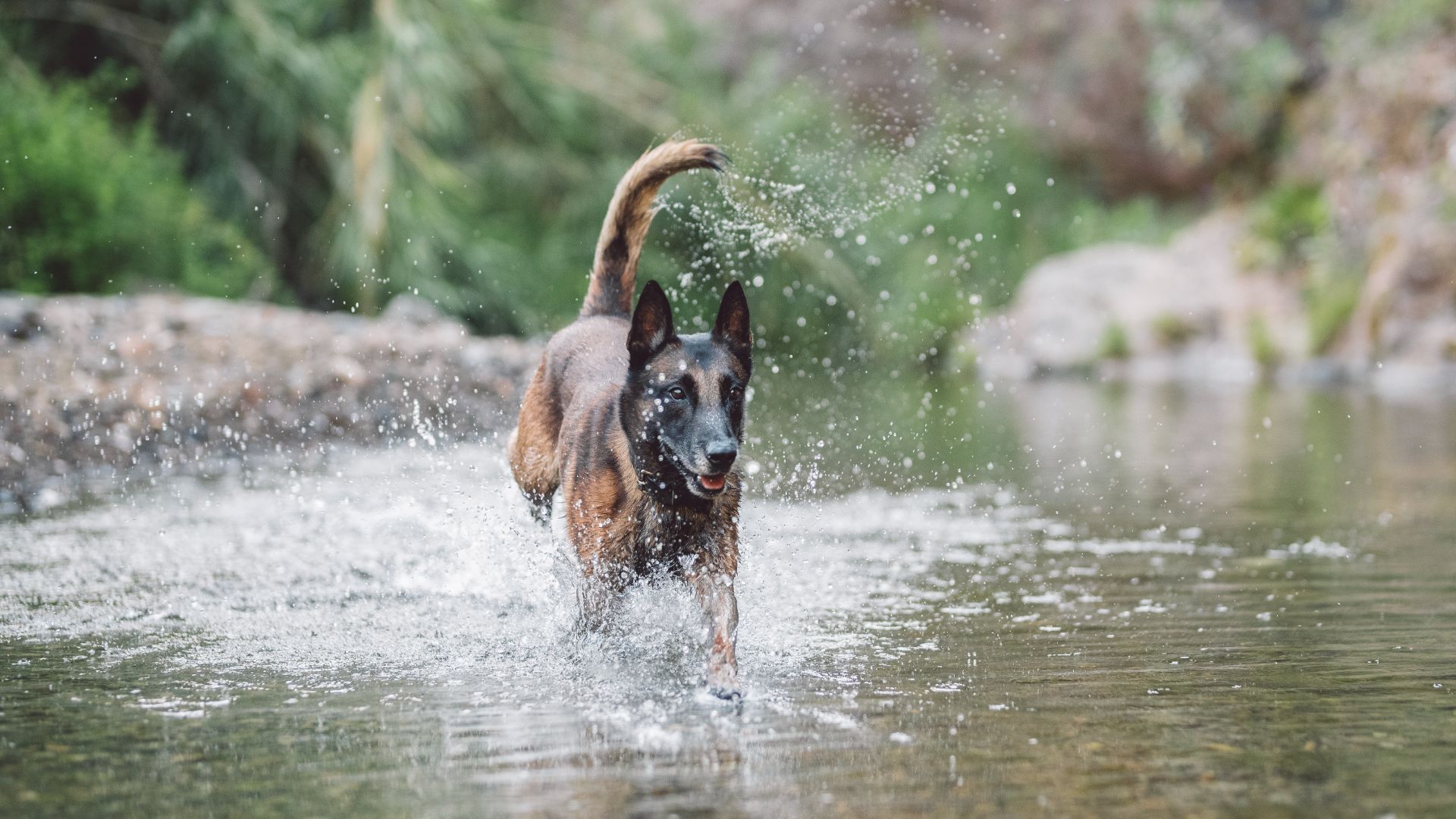
Much like the German Shepherd, the Belgian Malinois has a nose that can sniff out and track anything from people to explosives. One study published in the Polish Journal of Natural Science stated that German Shepherds and Belgian Malinois are the two most commonly trained dog breeds for police operations, with Malinois dogs performing slightly better in training exercises including searching and tracking.
They have a level of loyalty that makes them bond deeply with the humans around them and they’re incredibly smart and hardworking, which makes them a great breed to train.
Belgian Malinois have all the characteristics that make up a good tracking dog. Not only are they intelligent and agile, but their high work drive and boundless energy mean they won’t rest until they’ve found what they’re looking for.
Can’t decide between a German Shepherd vs Belgian Malinois? Check out our comparison.
7. Black and tan coonhound
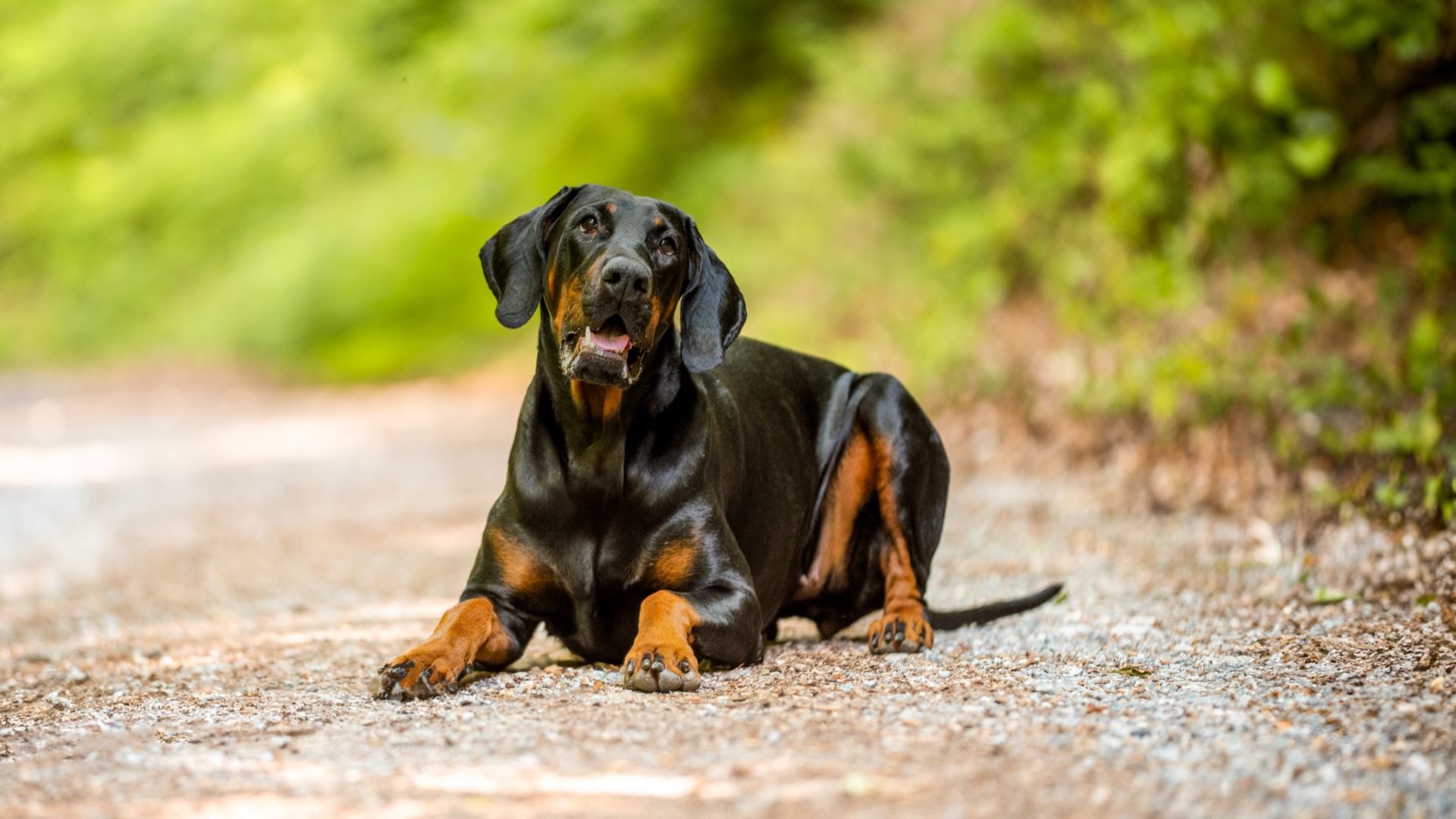
The black and tan coonhound is one of six types that fall under the coonhound breed, the other five being the redbone, English, treeing walker, bluetick and the Plott hound – and every single one of them excels at tracking.
Known for being lovable and even-tempered, the black and tan coonhound is a fairly old breed that descends from the Talbot hound, a dog that was popular in England during the reign of William I, the Duke of Normandy.
Big, powerful, and a tenacious tracker, this breed is painstakingly persistent in the way it can track a scent long after the trail has seemingly gone cold. Labeled as having one of the best cold noses in the business, the black and tan coonhound has saved many a life in search and rescue missions.
The only downside is that once they’re on a trail this breed is known to become so focused that they develop selective hearing, so you’ll need to take a firm and consistent hand with them to override their tendency to be independent thinkers.
8. German Shorthaired Pointer
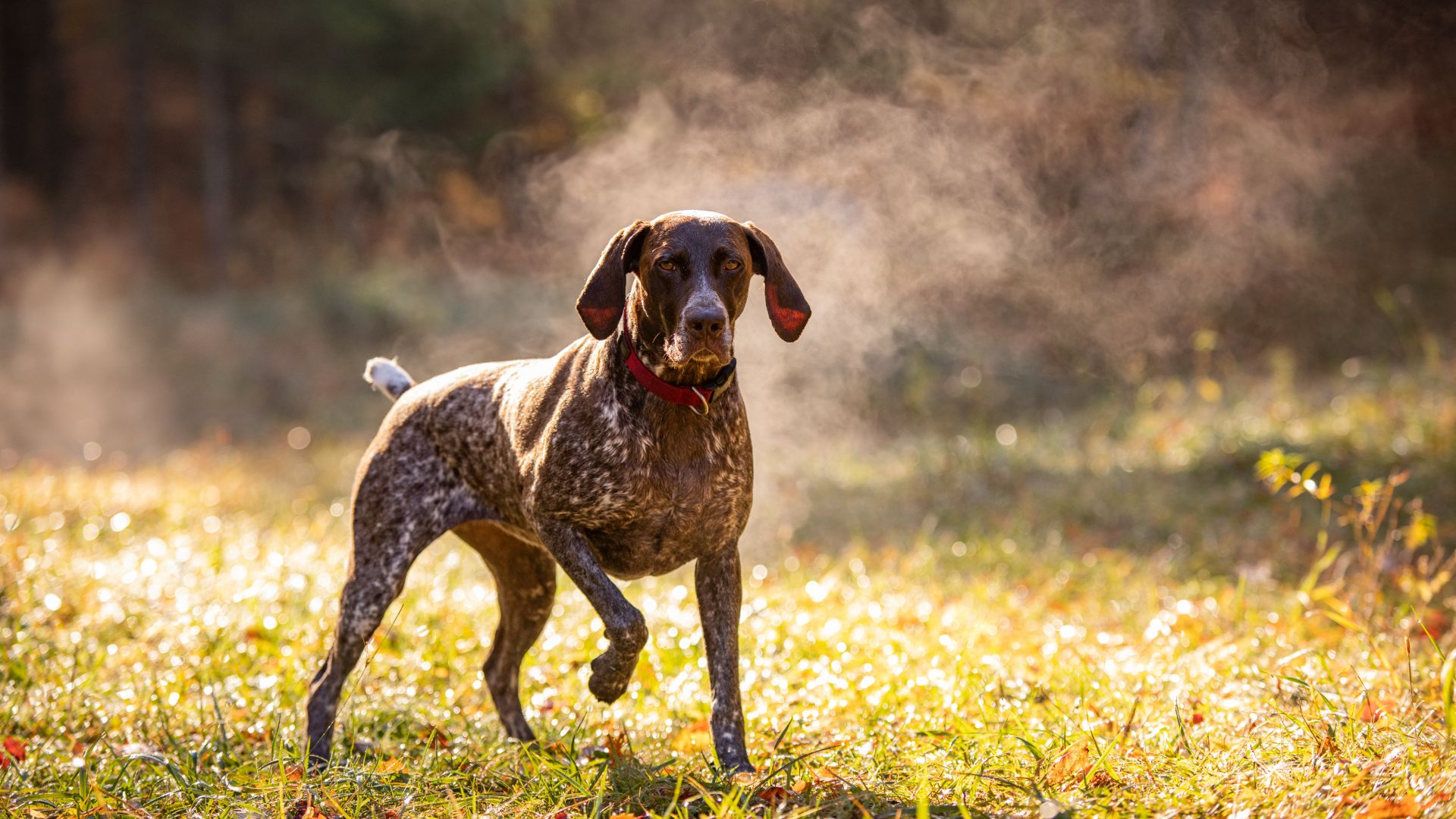
One of the most versatile hunting dogs, the agile and lean German Shorthaired Pointer excels on both land and in the water and their cooperative and affectionate natures make them popular tracking dogs and family companions.
A real Jack of all trades, there’s not much this dog can’t do proving to be equally skilled at hunting, pointing, and retrieving. It’s important to bear in mind that this breed is slower to mature than most, not reaching mental adulthood until they’re over the age of two, which can make the first few years of training rather entertaining!
Their excellent sense of smell makes the German Shorthaired Pointer another standout choice when it comes to search and rescue, but their most popular use is in hunting where they do an exceptional job of hunting gamebirds and retrieving waterfowl.
9. Dachshund
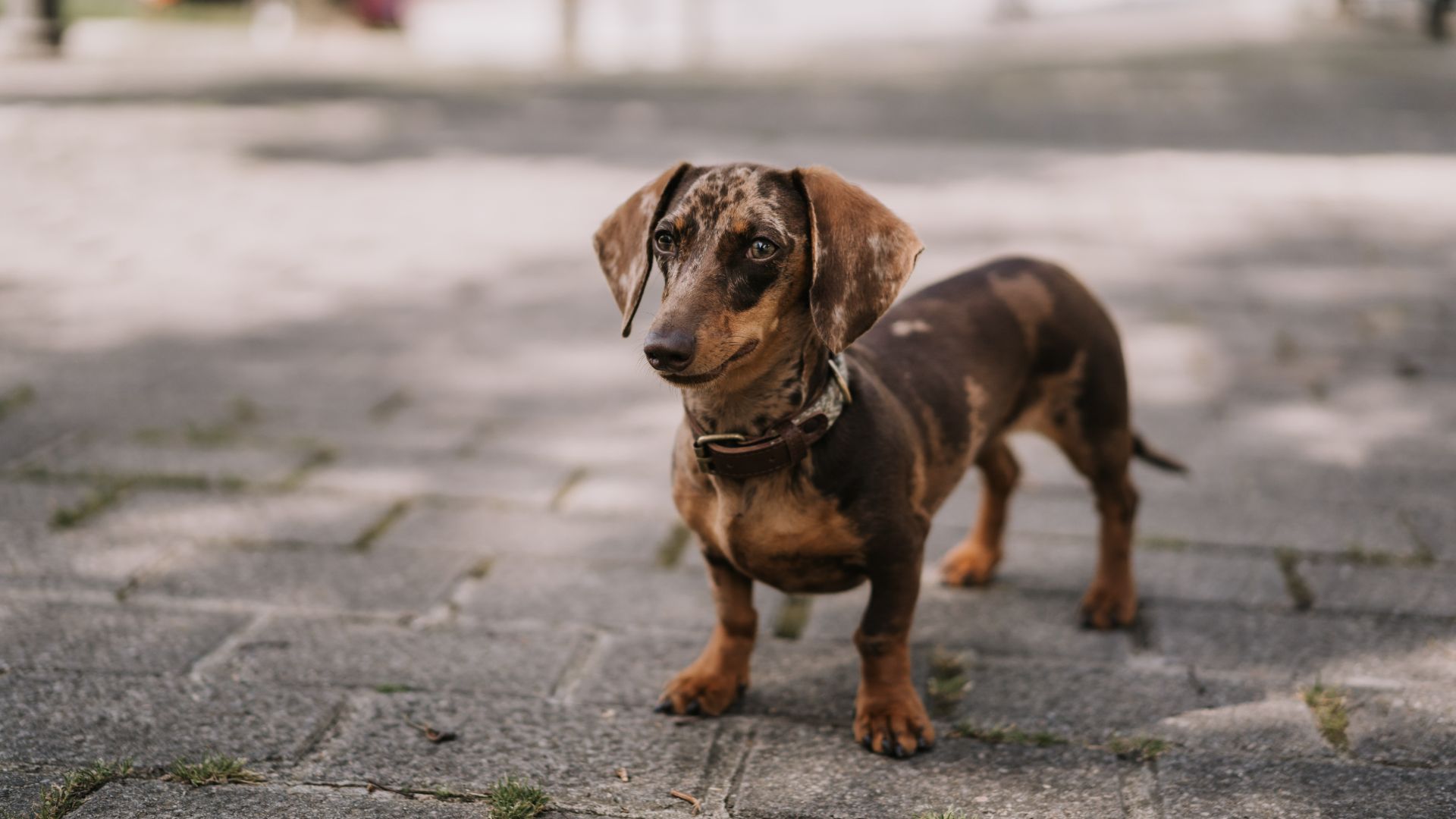
Hearts are constantly melting over this devoted, lively, and courageous little sausage dog which has a comical long body and short legs. Yet while their appearance can look comical they have a spunky personality and surprising level of endurance that make them hugely popular.
They may be the smallest of the best tracking dogs, but what the dachshund lacks in size they more than make up for with the area of their brain that’s dedicated to processing smells, which is forty times the size of a human’s.
Their long bodies and short legs were designed deliberately to help them follow pests and animals down into their burrows, equipping them with a strong prey drive and making them great at scanning and tracking.
Dachshunds have one major flaw though and that’s how easily distracted they get by competing scents, which can see them ditching one trail in favor of another. Thankfully, these little guys are massive foodies, so as long as you keep the rewards coming, they’ll stay on task.
10. Golden retriever
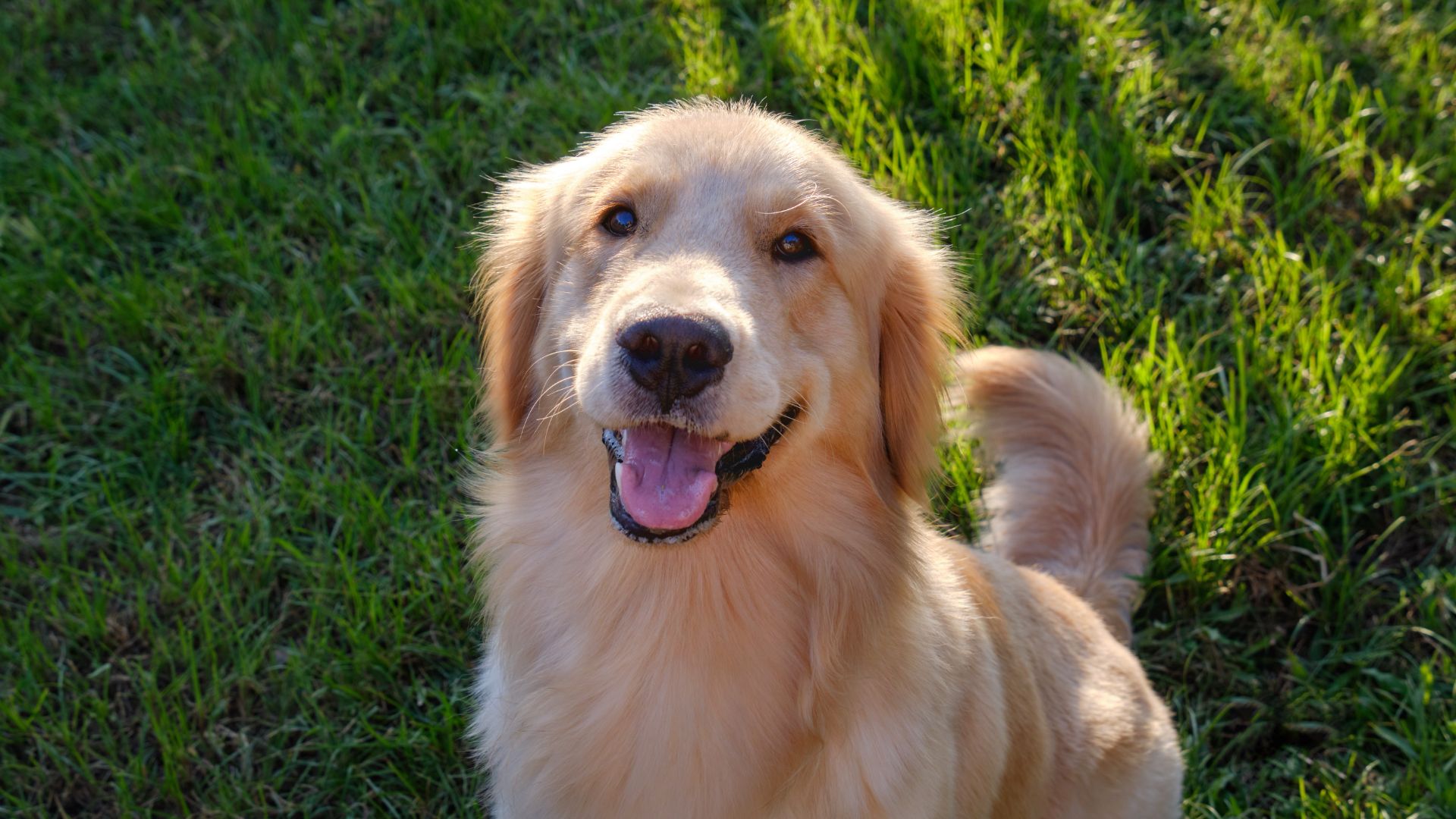
Invaluable in the field of search and rescue, golden retrievers are often first on the scene of mass casualty events, natural disasters, and hunts for missing people. They excel at sniffing, are energetic, and have a natural need to please and their hearing and night vision is second to none.
One of the best dogs for families due to their kind and friendly natures, the golden retriever was originally bred to retrieve shot waterfowl and this breed continues to be a popular choice for hunting and field work.
Keeping a dog bred for tracking
“Because tracking covers a wide array of breeds including spaniels, retrievers, and hounds, it’s hard to generalize their characteristics,” says companion animal vet Dr Rebecca MacMillan. “For example, I find that retrievers are friendly and easy to train, whereas some of the hounds can be more independent and stubborn.”
The best tracking breeds do have one thing in common, though.
“These dogs are working breeds and thrive on mental and physical stimulation,” explains Dr MacMillan. “This means they would suit an active family or an owner who is keen to do plenty of training exercises with them. Of course, they would also suit anyone who would like a gun dog for hunting and fieldwork.”
There is one main exception to this rule, though. “Basset Hounds, due to their body shape and mobility, are a bit lower energy and more laid back than some of the other breeds.”
Tracking breeds love to work, but Dr MacMillan warns against judging a book by its cover.
“There is a misconception that these dogs are all excitable, difficult to train, and have a high prey drive,” she says, before adding that success with tracking breeds is all about the right approach. “While some individuals can be this way, I find that most can be extremely obedient with the right consistent training and early socialization.
“They are highly reward-driven so the promise of a tennis ball or tasty snack usually gets them to concentrate.”
Want to learn more about these fantastic tracking breeds? Here are our favorite beagle facts and golden retriever facts

Bethany is an experienced writer who has been writing across the pets and equestrian sector for eight years.

Dr MacMillan is a companion animal vet who has always had a passion for writing and client communication. She works in the South West and loves complex medical cases.
Edited by Georgia Guerin.
Recent updates
This feature was last updated on February 24, 2025 by Bethany Stone.
PetsRadar Newsletter
Get the best advice, tips and top tech for your beloved Pets

Kathryn is a freelance writer who has been a member of the PetsRadar family since it launched in 2020. Highly experienced in her field, she's driven by a desire to provide pet parents with accurate, timely, and informative content that enables them to provide their fur friends with everything they need to thrive. Kathryn works closely with vets and trainers to ensure all articles offer the most up-to-date information across a range of pet-related fields, from insights into health and behavior issues to tips on products and training. When she’s not busy crafting the perfect sentence for her features, buying guides and news pieces, she can be found hanging out with her family (which includes one super sassy cat), drinking copious amounts of Jasmine tea and reading all the books.
- Dr Rebecca MacMillanVet
- Bethany StoneFreelance Writer
